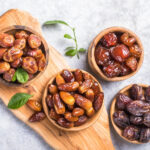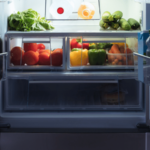Soft cheeses spoil faster than hard cheeses, due to their high percentage of moisture. Some varieties may have a mold shell (camembert, brie) or a natural crust (mara, romadur). They have up to 85% digestible proteins, a large amount of calcium, phosphorus and magnesium.
Types: brie, camembert, roquefort, gorgonzola, ricotta, mascarpone
Go well with: camembert can be fried and roasted. Ricotta, brie and mascarpone are suitable for roasts, salads and desserts, while moldy cheeses are excellent for sauces. They are also used as a decoration on a plate of hard cheeses or fondue. They are served with sweet fruit or caramelized onion jam. Visit https://www.cheeselovershop.com/ for all the information.
Canned cheeses
These cheeses are aged in brine and therefore have no crust. Its fat content is not more than 45% and that of salt reaches 7-10%. They are rich in folic acid and vitamins A, B, C, E, PP.
Go well with: feta cheese is suitable for salads and cold tapas. Halloumi is usually eaten fried (although, in general, everyone in this class is ideal for roasting). And, of course, on a cheese plate, you can combine them with fresh strawberries or honey.
Acid-curing cheeses
The main difference between acid-curing cheeses and curd is the method of fermenting milk. For this, lactobacilli are used. Sometimes, coagulating enzymes are added to the fermented rennet. This type of cheese is called mixed.
Go well with: sour milk cheeses are great for a cheese plate. You can decorate them with capers or nuts. They are also used in sandwiches combined with fresh herbs or avocados.
How to choose a high quality cheese
Watch. Good quality cheese is uniformly yellow. A bright color can indicate that a dye has been added. Look at the holes: the high-quality holes are roughly the same size and evenly distributed. The presence of mold and a white plate indicates inadequate storage (does not apply to camembert or blue cheese). The liquid in the preserved cheese must not be opaque.
Smell them. Low-quality cheeses usually smell like ammonia or acid, and spoiled ones have a rancid, rotten aroma. If you don’t smell anything, chances are you have a derivative product and not a cheese itself. The less milk there is in the composition, the less pronounced it will taste.
Touch it. Hard cheeses are dense and uniform in consistency. The edges must be free of cracks and crevices. And the same crust is pleasant to the touch, not sticky or sticky. When pressing hard cheese, it should not release any liquid. The preserved ones should not disintegrate easily or stick to the hands.
Try it. A good cheese does not taste like ammonia or acid and does not crack on the teeth. Canned cheeses should not be too salty. Sometimes too much salt is added to increase its shelf life.
Cheese and wine
White wine goes better with cheese than red. This is due to the fact that the former is free of tannins. But there are some exceptions.

 Guide to Choosing the Right Equipments for Singapore Commercial Kitchens
Guide to Choosing the Right Equipments for Singapore Commercial Kitchens  Steps to Reviving an Old-Fashioned Ice Cream Menu
Steps to Reviving an Old-Fashioned Ice Cream Menu  Opening Culinary Inventiveness: The Advantages of Business Kitchen Rental
Opening Culinary Inventiveness: The Advantages of Business Kitchen Rental  Harvesting Compassion: How Denver’s Food Donations Are Changing Lives?
Harvesting Compassion: How Denver’s Food Donations Are Changing Lives?  What Factors Should You Consider When Choosing a Sticker Manufacturer?
What Factors Should You Consider When Choosing a Sticker Manufacturer?  Where to Buy Dates Online: Discovering Quality and Convenience with Joolies
Where to Buy Dates Online: Discovering Quality and Convenience with Joolies  The science behind cold storage: preserving quality and freshness
The science behind cold storage: preserving quality and freshness  Signs Of a High-Quality Pizza
Signs Of a High-Quality Pizza  Exploring the Growing Market for Mussels Exports: Key Insights and Trends
Exploring the Growing Market for Mussels Exports: Key Insights and Trends 


